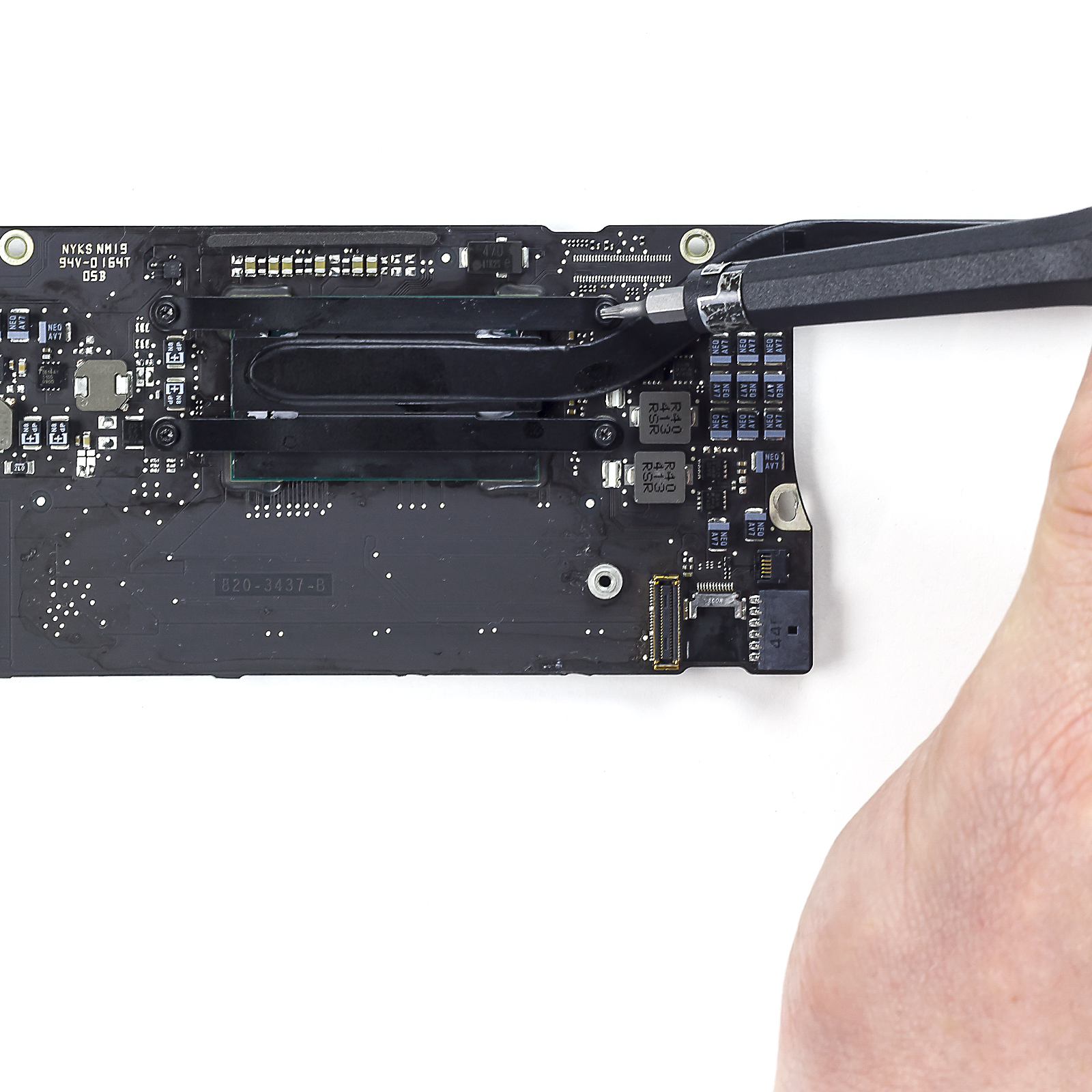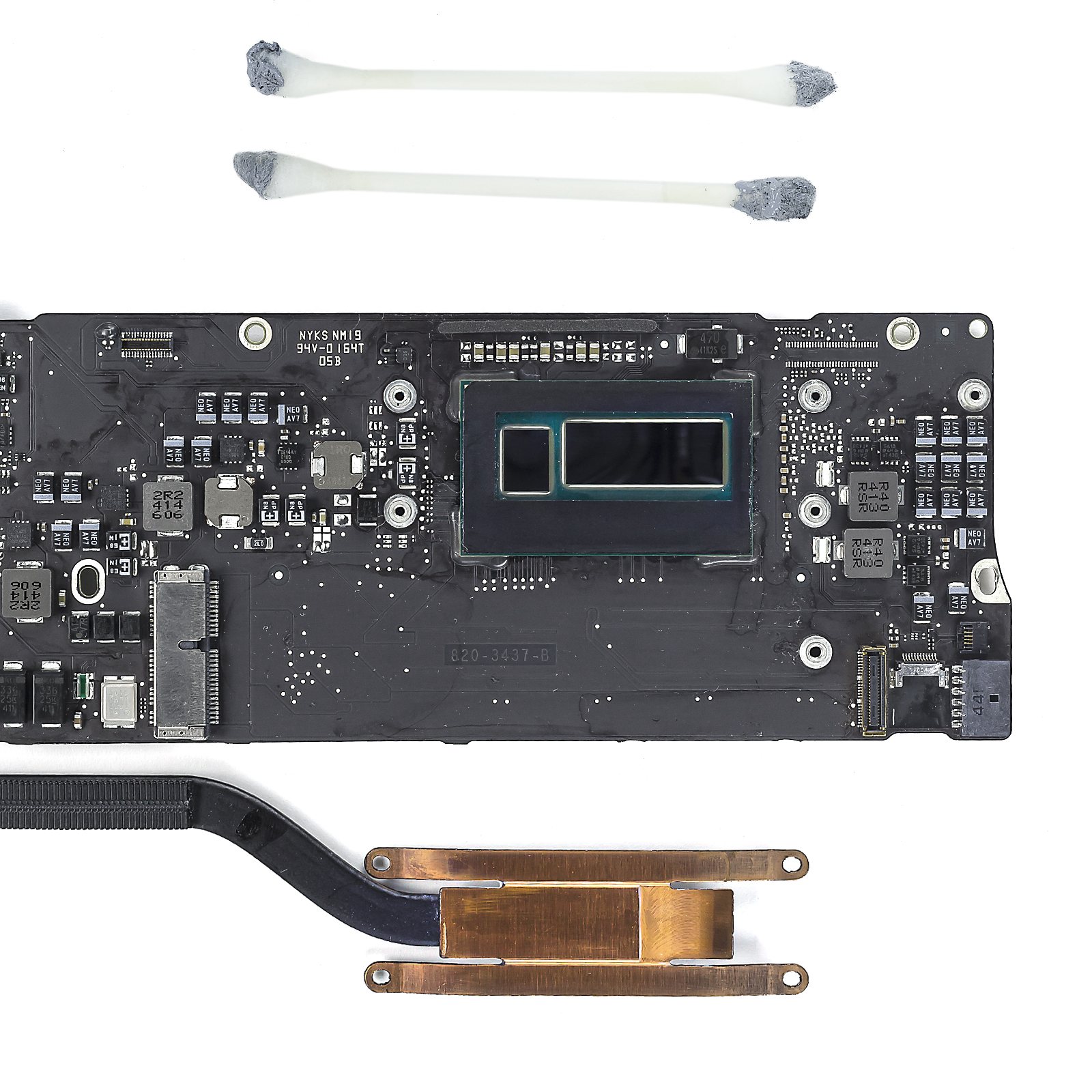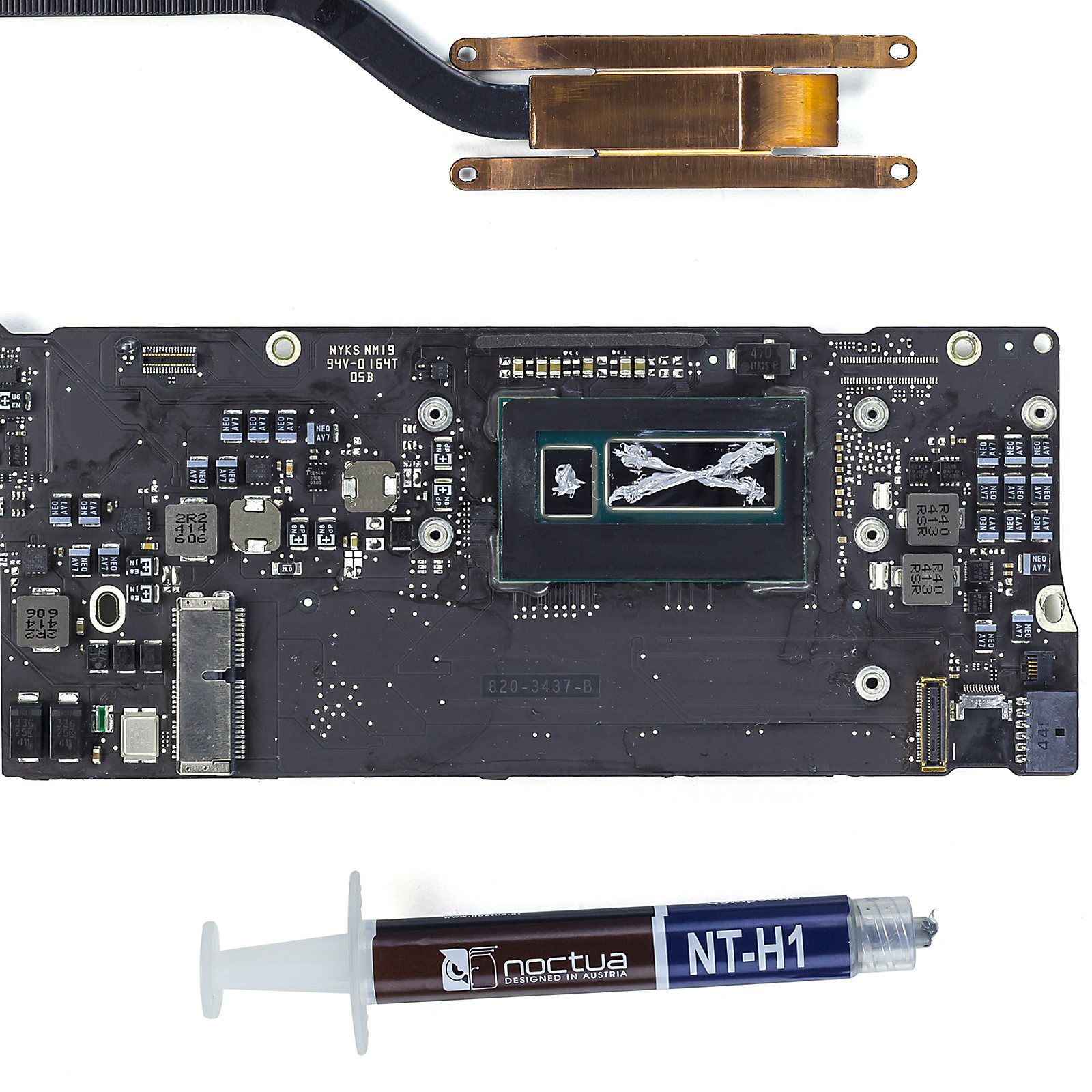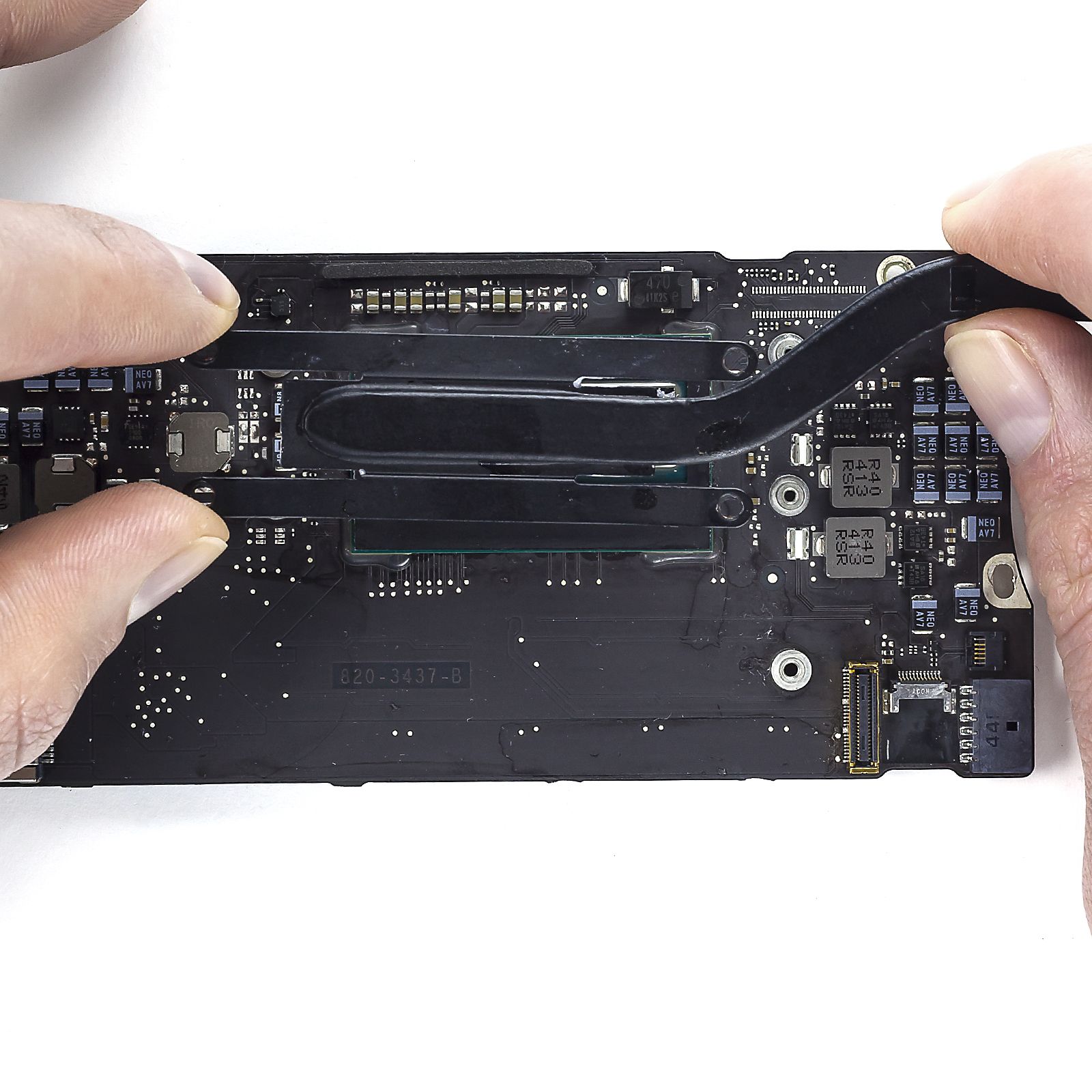How To Replace the Thermal Paste on Your Apple CPU
Building your own computer or assembling a repaired computer can seem pretty straight forward. This part connects to this part, you feel a reassuring click and you know that it belongs there. It just fits.
But then you come across some goop in a pouch, or maybe it’s in a syringe, and you find yourself thinking “I’m not a trained medical professional. What do I do with this syringe? Where does this part fit?”
We’ve got the answers about what thermal paste is, what is does, and how to apply it.
What is this thermal paste stuff?
Before you learn how to replace your thermal compound (thermal paste), you should take a second to understand what it actually is and the purpose it’s serving. Thermal paste acts as a bridge between the CPU and the heatsink. The CPU and heatsink are already sandwiched together, but microscopic imperfections in their surfaces reduce the efficiency of heat transfer between them.
The thermal compound fills in the tiny gaps and allows for a much more efficient transfer of heat away from the processor, and boy does the processor generate some serious heat. The thermal compound improves the efficiency of the heat transfer so much that without it, the processor overheats in a matter of seconds or minutes, at which time your computer will likely shut down to protect itself from permanent damage.
Why would the thermal paste need to be replaced?
Over time, thermal compound will dry out and begin to develop cracks which interrupt the heat transfer, making it much less effective. If you use your computer frequently and for longer periods of time, this process happens more quickly. An average user who only does some light web surfing can generally go many years without needing the thermal compound replaced, but the thermal paste is always becoming less efficient at pulling heat away from the processor.
For computer components without moving parts, like the CPU, heat is the silent killer. The hotter your computer runs, the shorter the lifespan. So the more efficiently you can draw heat out of the computer chassis, the longer the internal components will last.
The healthy temperature range for a CPU varies quite a bit by processor type, so it’s best to look up the safe range for your particular processor. A number of things could be responsible for a spike in temperature, but if the obvious reasons are not the culprit, thermal paste could be the cause. There are free apps and software available for Mac computers that will track CPU temperature. Smcfancontrol works wonderfully, and it tracks more than just temperatures.
How to replace the thermal paste.
Below is a step-by-step guide detailing our favorite method for replacing thermal paste. The demonstration was performed on a MacBook Air, but the same steps can be applied to most computers.
Necessary Tools & Supplies
- Antistatic wrist strap
- Isopropyl alcohol (Rubbing alcohol)
- Q-tips and a lint-free cloth (a coffee filter will work)
- All screwdrivers necessary to open your device and remove the logic board and heatsink
And of course, a syringe of thermal paste
Step 1
Take your screwdriver and carefully remove the screws attaching the heatsink to the CPU. Set the heatsink and screws aside.
 Installing a heatsink is a bit tricker, but just unscrew to remove.
Installing a heatsink is a bit tricker, but just unscrew to remove.
Step 2
Douse your Q-tip in rubbing alcohol (90% or higher) to prepare for removing the old paste from the CPU and the bottom of the heatsink.
 Maybe you have a cool alcohol dispenser like we do? If not, you'll still manage.
Maybe you have a cool alcohol dispenser like we do? If not, you'll still manage.
Step 3
Remove ALL the thermal paste with the Q-tip, leaving nothing behind. Wipe the small fibers/hairs off with a lint-free cloth or coffee filter.

Step 4
You’re almost ready to start applying the thermal paste! By now, your CPU and heatsink should look something like this:

Step 5
Apply a small amount of paste directly to the surface where the heatsink will rest. Be careful not to apply too much. Thermal paste is generally non-conductive, but there’s no need to make a mess all over your board.

Step 6
Gently place the heatsink directly on top of the CPU where it was first attached. If any thermal paste comes out the sides, then too much was applied. In this case, carefully wipe excess paste up with another coffee filter until none remains on your board.

Step 7
After the heatsink and CPU are reunited, it is crucial not to pull them apart or the seal will be compromised. If this happens, air pockets will have likely formed between the processor and heatsink and the previous steps will need to be performed again.
Now just screw everything back together in the proper order and you are finished!
Whether the board you are operating on looks like the one in the steps shown above or not, the process is pretty similar.
Here are a few different examples of boards with a red outline highlighting the area where thermal paste should be applied:

Think you know a better way? Let us know in the comments!
Show Your Love For This Post
Recommended Posts
High Sierra and Testing RAM
With macOS 10.13, otherwise known as High Sierra, Apple introduced an ambitious EFI update. Several of the changes include: the introduction of the Apple File System, support for NVMe drives, and the usual batch of security updates. However, these EFI updates can cause some unwanted behavior when you test your Apple computer’s memory. At Beetstech, we use a long-time industry standard, MemTest86 to perform a comprehensive test of each computer’s RAM.
But never the type to blindly accept test results, strange testing outcomes led us to discover a bug in MemTest86 affecting computers running the new EFI firmware. In short, the newly updated EFI causes MemTest86 to incorrectly fail certain tests. But there is good news: while normal operation of MemTest86 is limited under these new EFI updates, we also discovered some simple workarounds for testing your Apple’s memory in MemTest86.
So let’s dive into how we discovered the MemTest bug, devised a reliable work-around, and get into some nitty gritty details of MemTest86 operation.
MacBook Air Power-On Pads – Location & Use
They go by “jumper pads”, “short-circuit pads”, “power pads”, and “power-on pads”. Whatever you call them, there are two bits of metal on your MacBook logic board that can force your laptop to boot up, even if the power button won’t do the trick.
OEM MagSafe Chargers vs Cheap Imposters: Teardown for Truth
Anywhere premium products are produced, there are unsavory folks trying to make a quick buck selling cheap knockoffs. It happens in every industry, from clothes to food to tech. But in recent years, counterfeit electronics have surpassed nearly all other categories of counterfeit goods by dollar value, and Apple, being the de facto high-end electronics manufacturer, makes for a prime target.
But you’d never be caught buying counterfeit electronics, because you can tell the difference, can’t you?
The Ultimate Guide to Apple’s Proprietary SSDs
Remember the good ol’ days of carrying a spare battery, upgrading your own RAM, maybe even adding a second hard drive? If you’re an Apple user, those luxuries may be behind us, but upgrading your own solid state drive is still a privilege the Apple overlords allow us to have, for now that is.
Despite retaining the ability to upgrade your own SSD, ever since Apple introduced their proprietary “blade” SSDs in 2010, the task hasn’t been as simple as it once was. Apple talks up read and write speeds, but they rarely dive into the nitty gritty details of the technology behind the SSDs they use — drives specially designed only for Apple computers.
After countless questions, both from customers and our own staff, we decided to start our own investigation into the hardware involved. You have to be a bit of a private eye to uncover the secrets behind these drives, and the deeper we looked, the more surprises we found.
Your Hard Drive Cable Is A Ticking Time Bomb
Owners of a Unibody MacBook Pro laptop are probably already aware that failure of the hard drive flex cable is a common issue. While it affects just about the entire Unibody lineup, the Mid 2012 MacBook Pro 13″ (Model A1278) is especially prone to this type of failure.
What is it that makes the Mid 2012 release special in this regard? A design flaw in the flex cable that seems to be compounded by the properties of the aluminum housing.
Our repair services department noticed this issue when they’d replace a bad cable, only to have the customer return a few months later with another bad cable. And possibly again with yet another bad cable. It didn’t matter if we used a used cable or a new cable in the replacement. Customers kept returning with the same persistent issue. We had to figure out what was causing the issue and find a solution.


When you reseat the heat sink do you move it around slightly to spread the thermal paste or does it happen naturally?
Whats the black tape like thing around the cpu? Mine got removed while doing this. Where can I get a replacement?
You could add / use a full ESD mat and strap / Place PC and any related boards (If removed) on mat (ESD damage can take years to show up!)